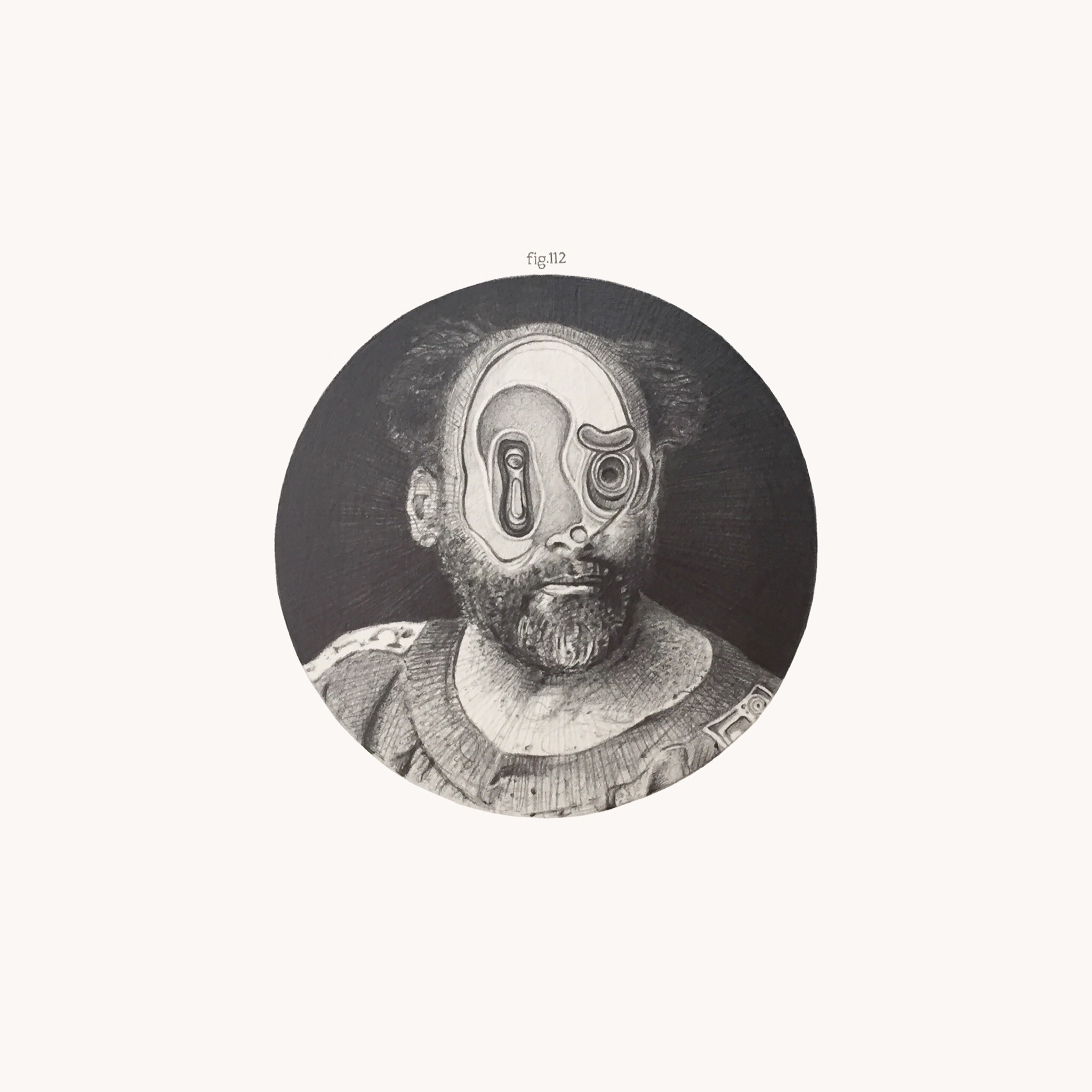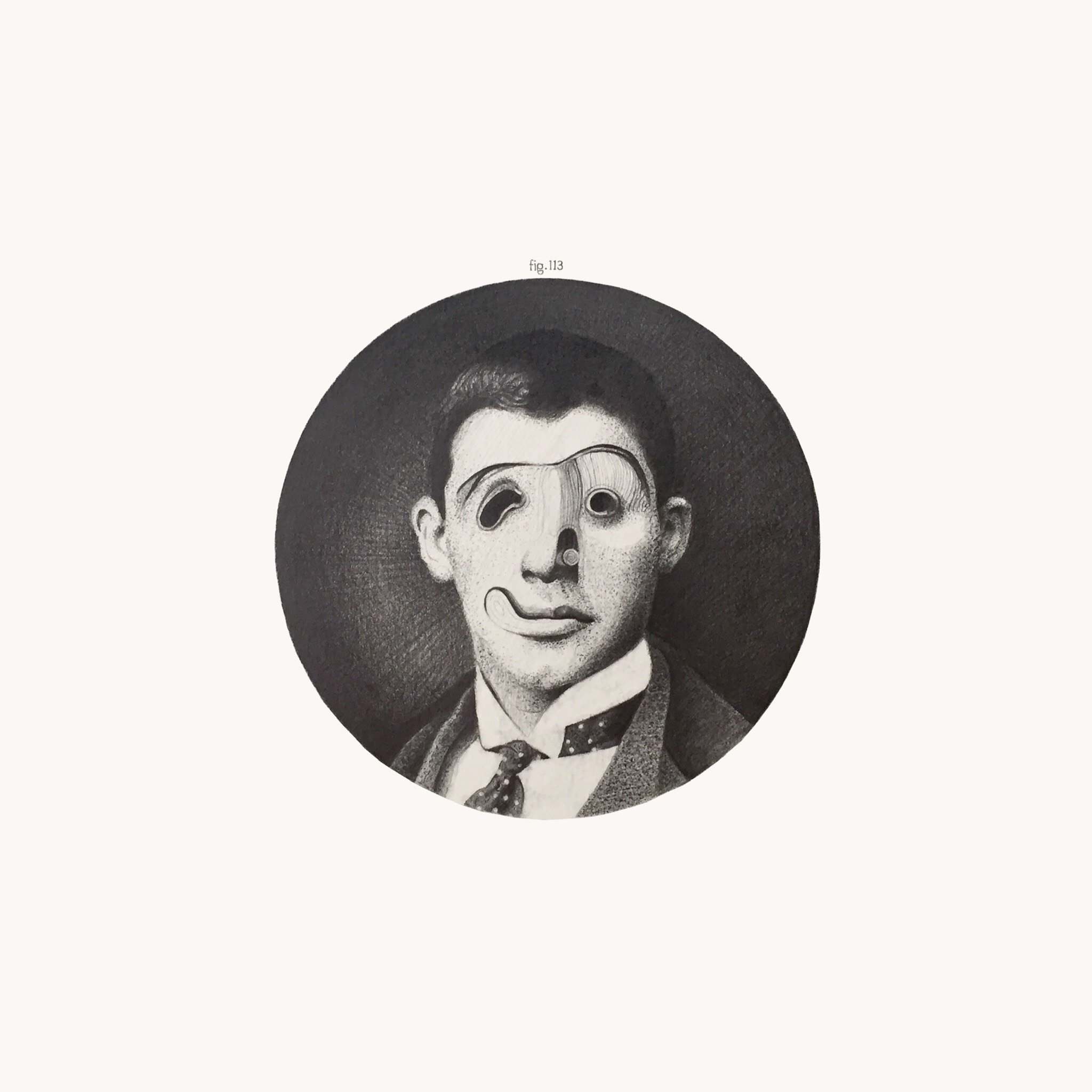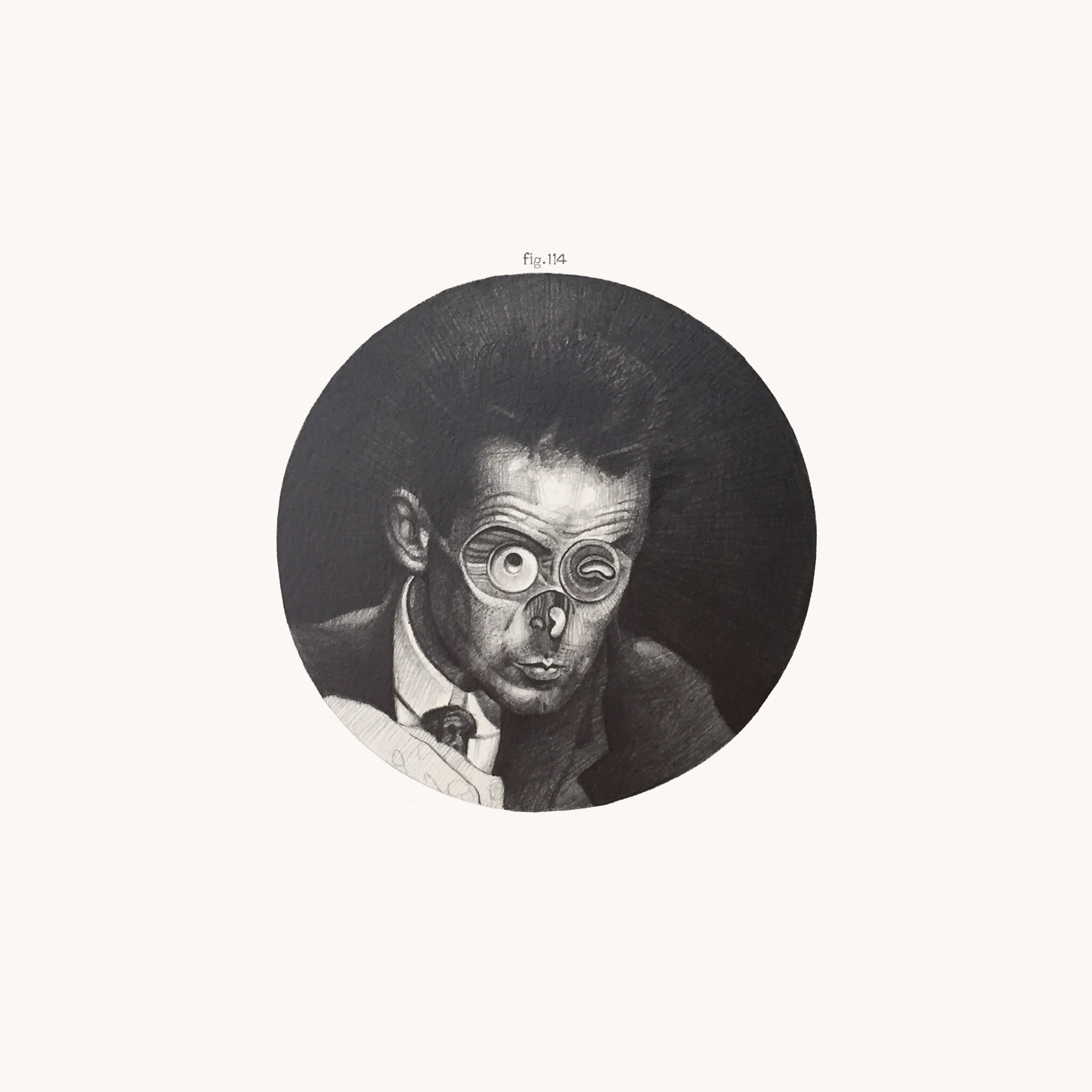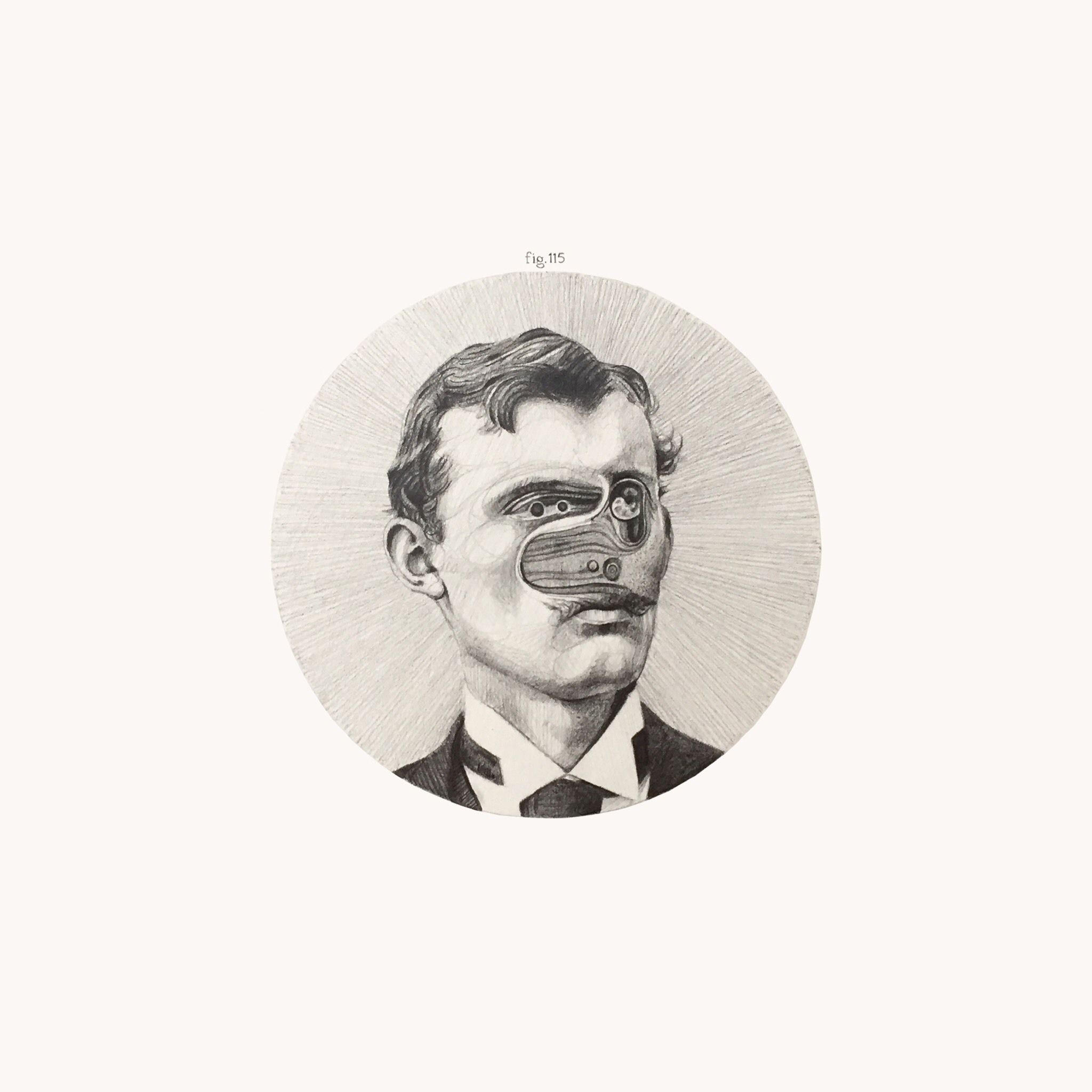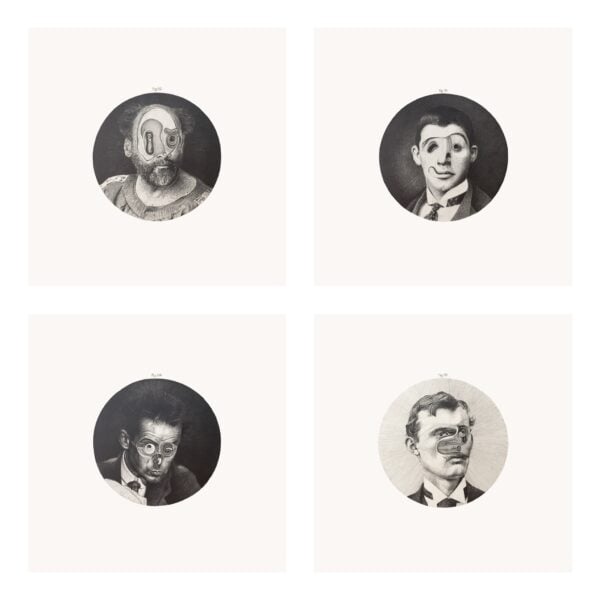Jorge Rodríguez
figs. 112-115. H1N1 (1918)
Artwork Statement
H1N1 (1918)
MORTALITY AND MORBIDITY
The 1918 H1N1 virus, better known as Spanish Flu, was a pandemic that devastated the human species. Millions of people perished, among them the young painters Egon Schiele and Amadeo de Sousa-Cardoso; also Gustav Klimt, one of the figures of symbolism. The virus was relentless and did not discriminate! however, Edvard Munch was fortunate to survive and self-portray in the throes of suffering. These four artist portrait drawings constitute a single piece called H1N1 (1918). These teratological figures1 discuss their historical burden in universal culture and their fragility as mortals. Today (COVID-19) is present, leaving an immediate and perceptible mark; thanks to the media and information. Will we witness his legacy in history? I propose with this piece and its protagonists that we meditate on the new reality in which we live. Let us stop, and as we contemplate it, think about our vulnerability, mortality, and transcendence.
Mortality
1. Quality of what has to die. 2. Proportional number of deaths in specific population or time.
Morbidity
1. It is the incidence of diseases in the population and includes both fatal and non-fatal diseases. 2. Proportion of people who fall ill in a place during a given period of time in relation to the total population of that place.
fig. 112. Gustav Klimt.
Austrian painter victim of the Spanish Flu.
fig. 113. Amadeo de Souza-Cardoso.
Portuguese painter victim of the Spanish Flu.
fig. 114 Egon Schiele.
Austrian painter victim of the Spanish Flu.
fig. 115 Edvard Munch.
Norwegian artist survivor of the Spanish Flu.
1-Teratology
1. Scientific discipline that, within zoology, studies abnormal creatures, that is, those natural individuals in a species that do not respond to a common pattern. 2. Study of anomalies and monstrosities.
